
Pre-drywall inspection costs vary depending on the home size, build complexity, and reporting you receive. Estimate your budget with this cost guide.
Get a whiff of what’s going on


Expired or old drywall mud has a particularly foul, musty smell.
Mold, mildew, and dead animals can also cause a strong odor.
Moisture in drywall storage, transportation, or installation can cause a musty odor.
Install drywall in a dry, sealed, and heated environment.
Work with a local drywall repair pro to assess the situation and remove the poop smell.
Smelly drywall wreaks havoc on your home’s ambiance and your well-being. If your walls have a poop-like or musty odor, it could be due to expired drywall mud, drywall that was exposed to moisture, or a dead animal. Here are the nine reasons why your drywall smells like poop and what to do next.
If you let drywall mud or texture sit in a tank or pail for more than a few months once it’s opened, it can turn sour and smell like rotten eggs. Once it’s on your walls, it’s hard to remove that smell.
Purge and clean your tank, and discard drywall mud that has been open for more than six months. If you notice a smell when you open the container of drywall mud, don’t use it.
If the mud is already on your walls, contact a local drywall repair pro to go over your options. Removing mud from your wall can be a tricky process, and DIYing it can cause further damage. If you’re an experienced drywaller, remove the bad mud with a scraper, sander, and sponge.
Unopened drywall mud can last for a couple of years, or as long as the manufacturer’s date indicates. After that, mold starts to grow and can cause a poop-like smell that will permeate your home if you use it.
Toss expired drywall mud before using it (the cost of new mud is nothing compared to the havoc of stinky walls). If you notice a smell when you open the container of mud, don’t use it. If it’s already on your walls, contact a local drywall repair pro to remove the mud safely.
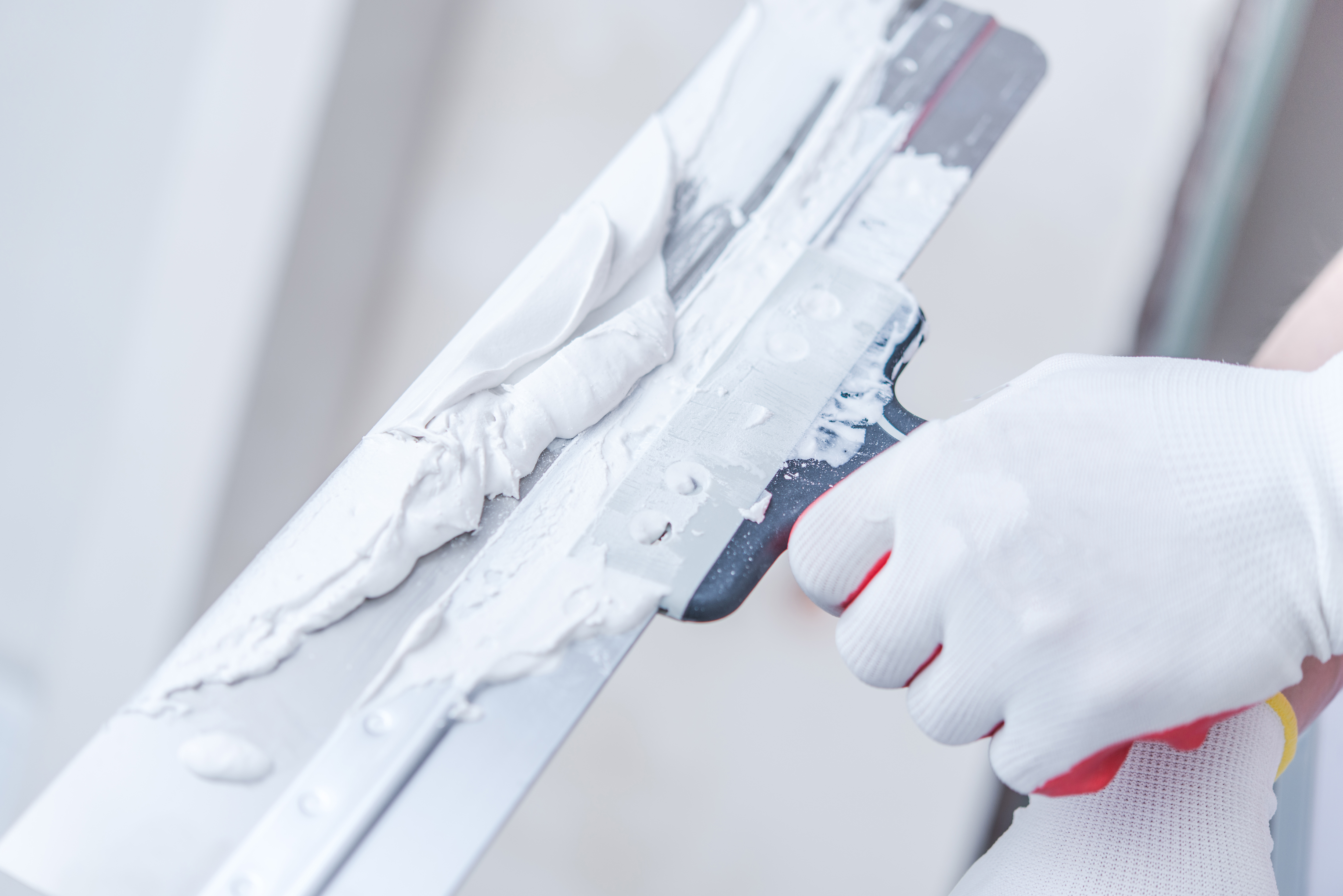
Drywall mud has an earthy or clay-like smell when you apply it. That’s normal. Just wait for the mud to dry (about 24 hours). But if you smell a musty, sulphuric, or poop-like smell before application, don’t use the mud.
Open your windows to allow for better airflow. Wait for the mud to dry completely before applying primer. Run a fan and an air purifier to pull out the smell further.
Drywall is susceptible to taking on moisture. Whether it’s exposed to a leak or moisture during installation, mold and mildew can grow, causing a distinct smell that resembles rotten eggs or contents best suited for your toilet.
Check for signs of mold in the room and address the underlying issue, whether it’s a roof leak or poor ventilation. If you suspect mold, your best bet is to hire a professional mold inspector near you to assess and fix the issue.
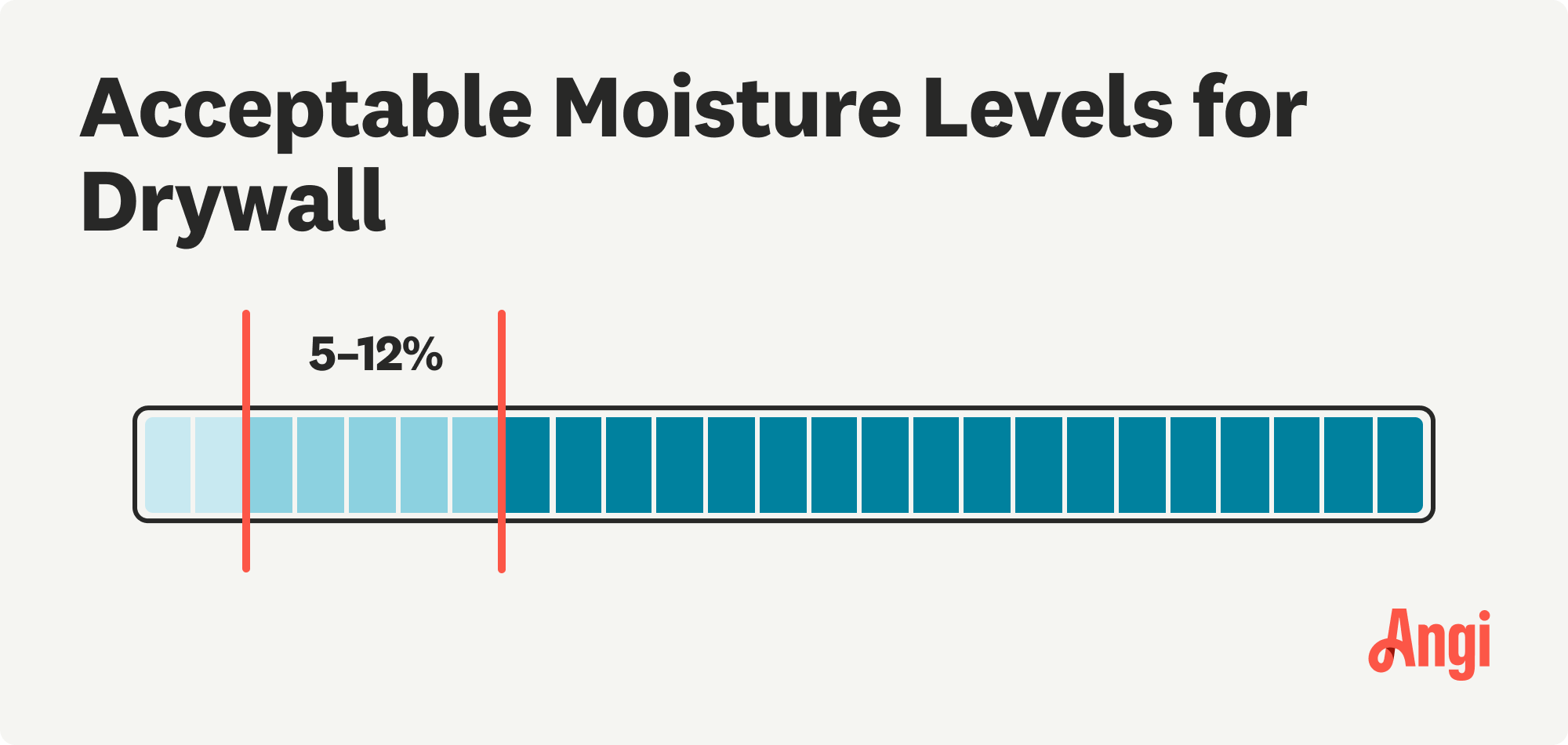
Drywall should always be installed in a dry, sealed, and heated space. If drywall is installed in a cold or damp environment, it can grow mold. If the smelly drywall is in the basement, the foundation walls should be waterproofed, insulated, and framed to prevent moisture from seeping into your walls.
Run a dehumidifier in your basement to reduce moisture levels. For a long-term solution, you may need to re-drywall your basement and properly prepare the foundation walls before installing new drywall. Work with a local drywall installer for such a large project to ensure a job done well.
If the drywall was stored or transported in a humid environment, the paper facing can retain moisture, leading to mold or mildew. The musty odor is an indicator of this problem, and it likely wasn’t your fault.
Dry the area with fans and dehumidifiers. If the drywall smell doesn’t improve, call a pro to remove and replace the drywall.
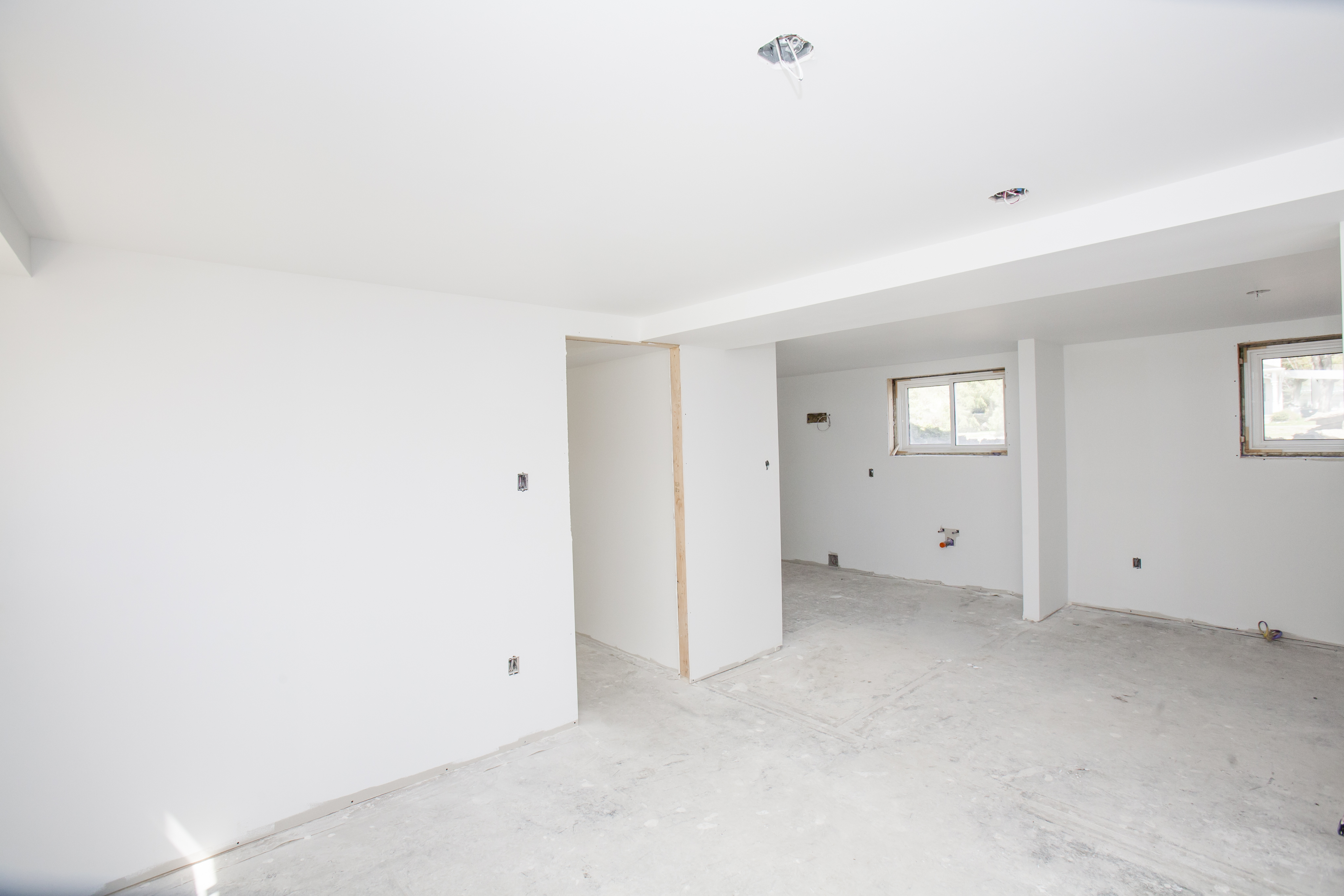
If the drywall is in an area with poor ventilation or vapor barriers, such as in a basement, a musty smell can be more noticeable. Drywall in a poorly ventilated space can also absorb other odors from the surrounding area, such as scents from paint or insulation.
Increase airflow to disperse the odor. Ensure your vents are open and clear. Maintain your HVAC system to ensure proper airflow in your home.
If an animal, such as a mouse or bat, dies behind a wall, the decay can cause foul odors, including a poop-like scent.
Locate the animal and remove it, or call a local animal removal specialist.
If you smell sewage near an area of your wall, you could have a toilet leak, blockage, or sink leak.
Call a local plumber to assess the situation and repair the leak, or try to find the leak and repair it on your own.
If extra ventilation, time, and a dehumidifier don’t improve the smell, call a local drywall repair pro. They’ll need to remove bad drywall mud or moisture-ridden drywall. Drywalling is tricky and is best left to the pros. Hiring a drywall repair pro costs $90 per hour on average, but it’s well worth the investment.
Here are some tips for preventing a less-than-pleasant odor in your drywall:
Use new and unexpired drywall mud.
Install a vapor barrier, insulation, and framing behind any basement drywall.
Store, transport, and install drywall in sealed, dry, and warm environments.
Check for leaks in your home and repair them as soon as possible.
Get at least three quotes for drywall pros near you and look at their reviews.
From average costs to expert advice, get all the answers you need to get your job done.

Pre-drywall inspection costs vary depending on the home size, build complexity, and reporting you receive. Estimate your budget with this cost guide.
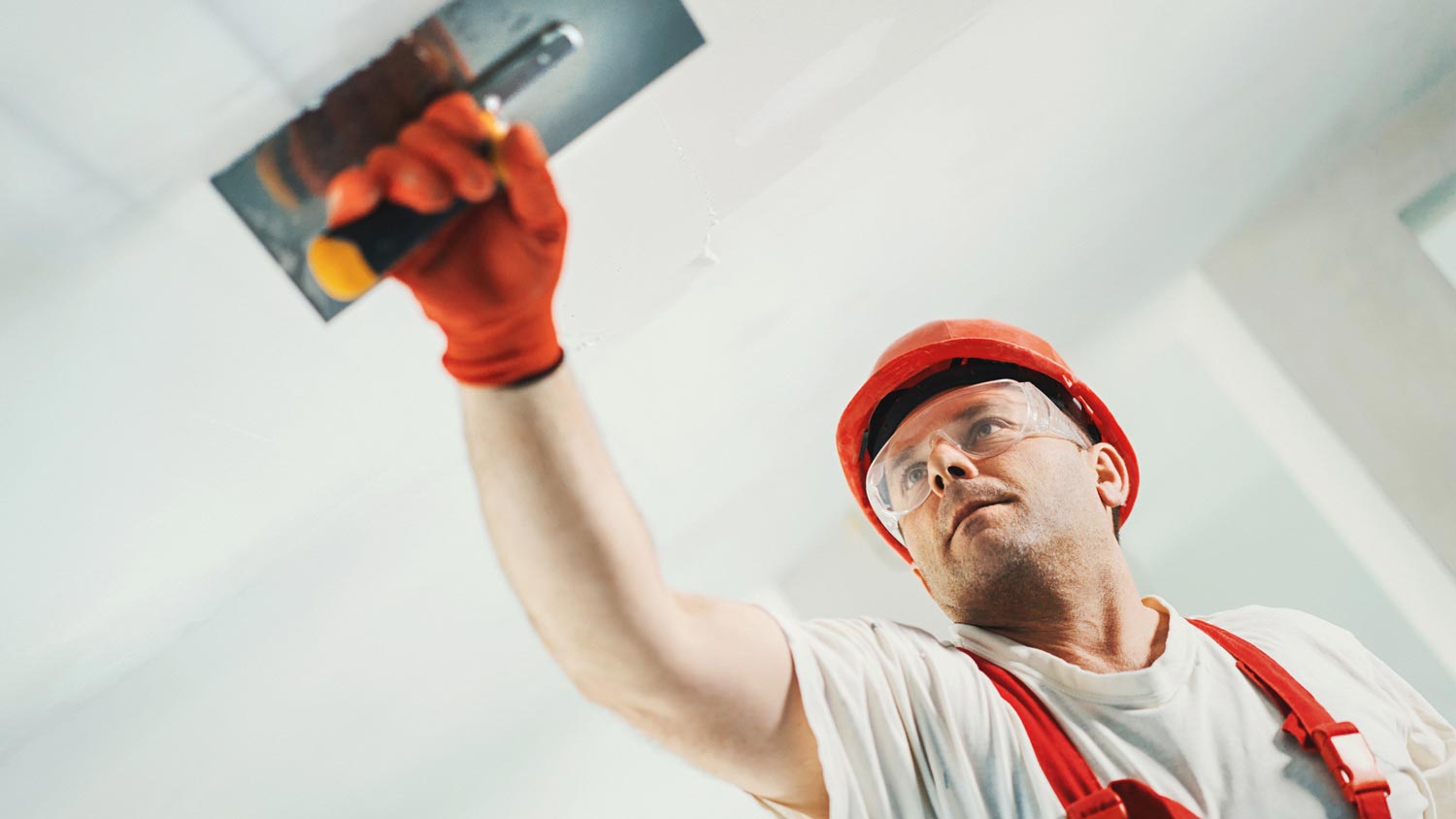
Skim coating drywall is a great alternative to replacement, and is often more affordable. Use this guide to estimate the cost to skim coat walls in your home.

The cost to replace plaster with drywall can quickly add up. This guide will help you budget for this project and decide if it's worth the effort and cost.
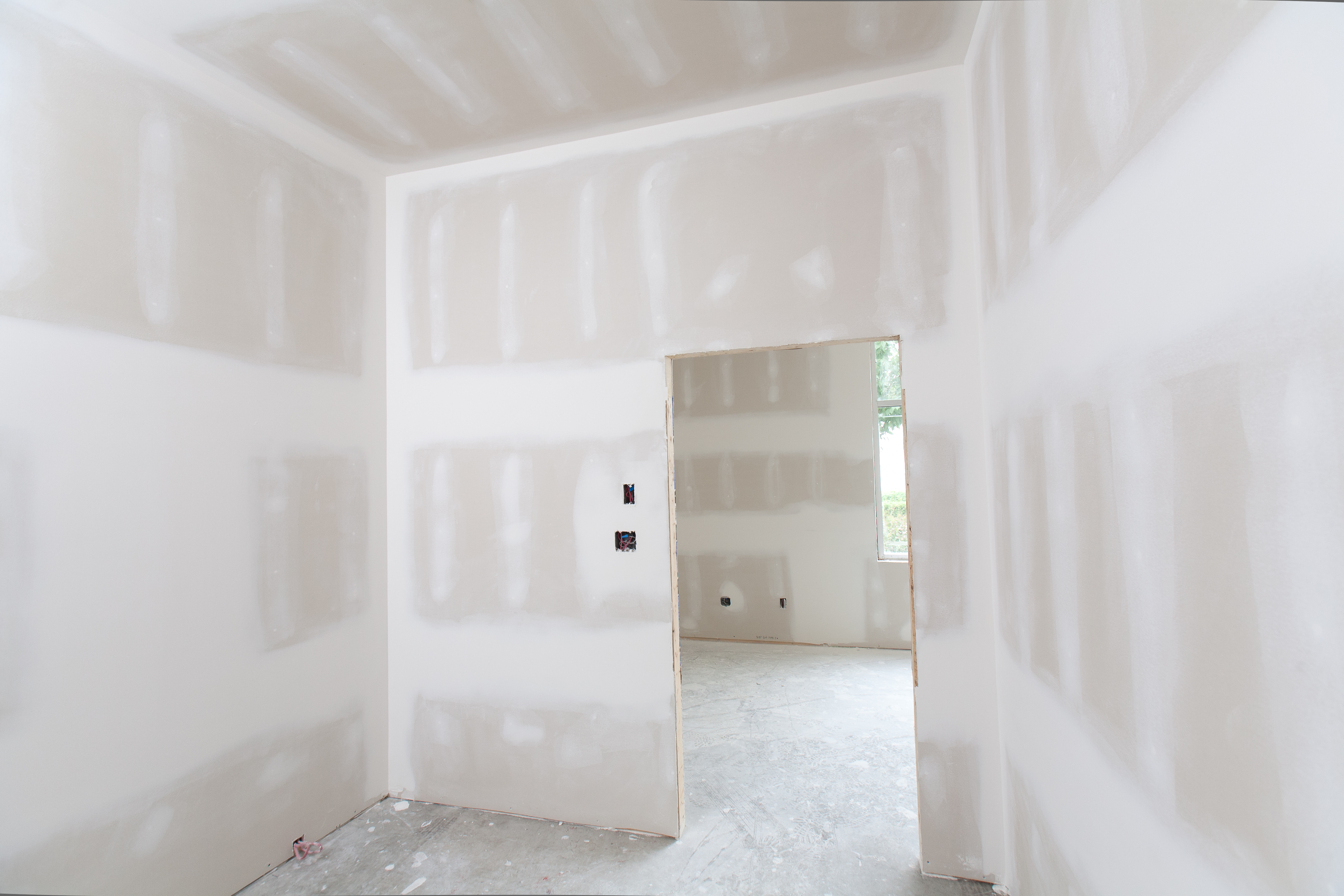
From incorrect mixing to poor weather conditions, there are a few reasons for joint compound not sticking to drywall. Learn how to avoid this drywall problem.

Drywall is made of a crushed mineral called gypsum sandwiched between two layers of paper. Find out more about the components of drywall in our guide.

If you’re considering the pros and cons of hanging drywall vertically, most drywallers install it that way. Learn the best applications for this installation method.